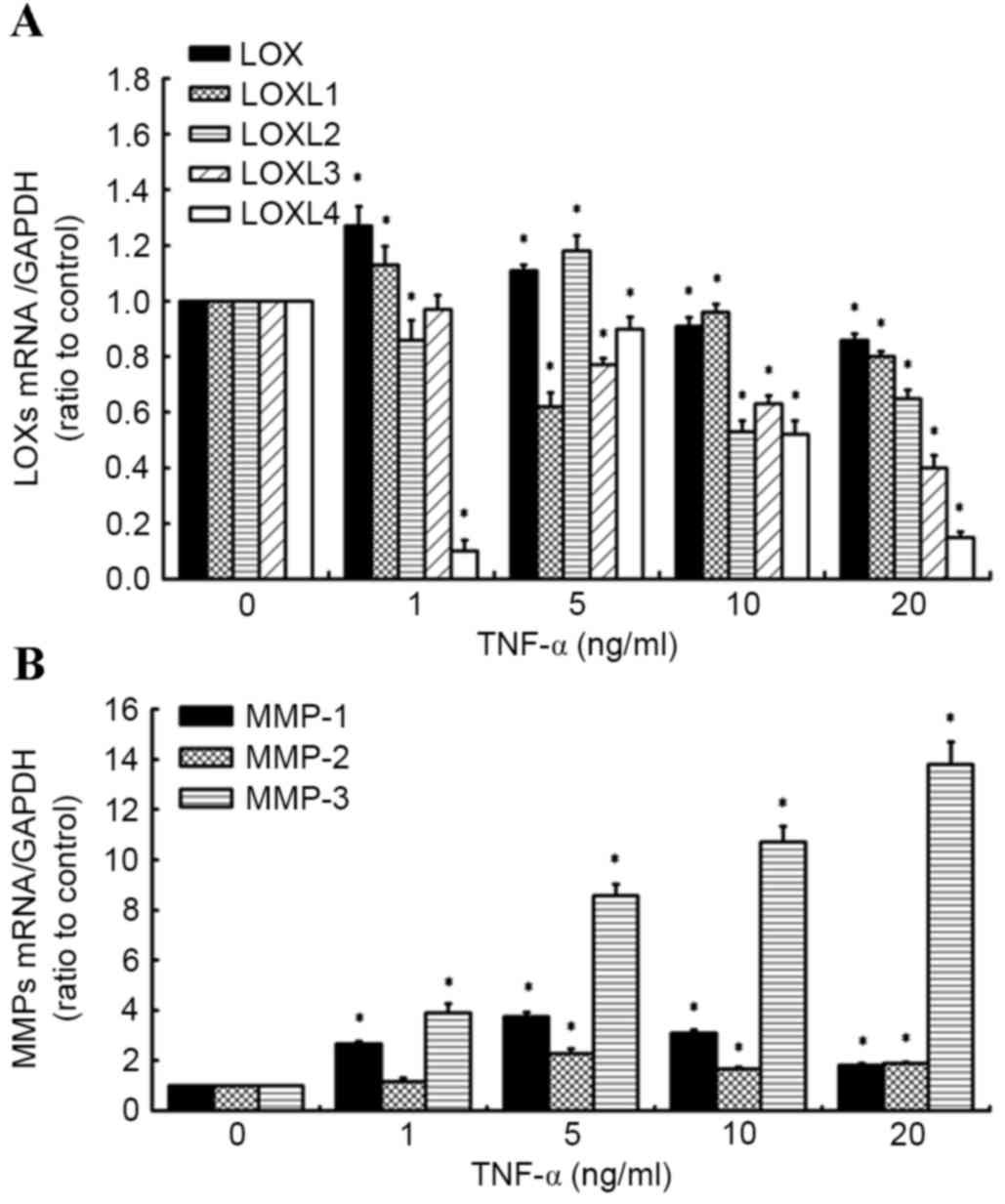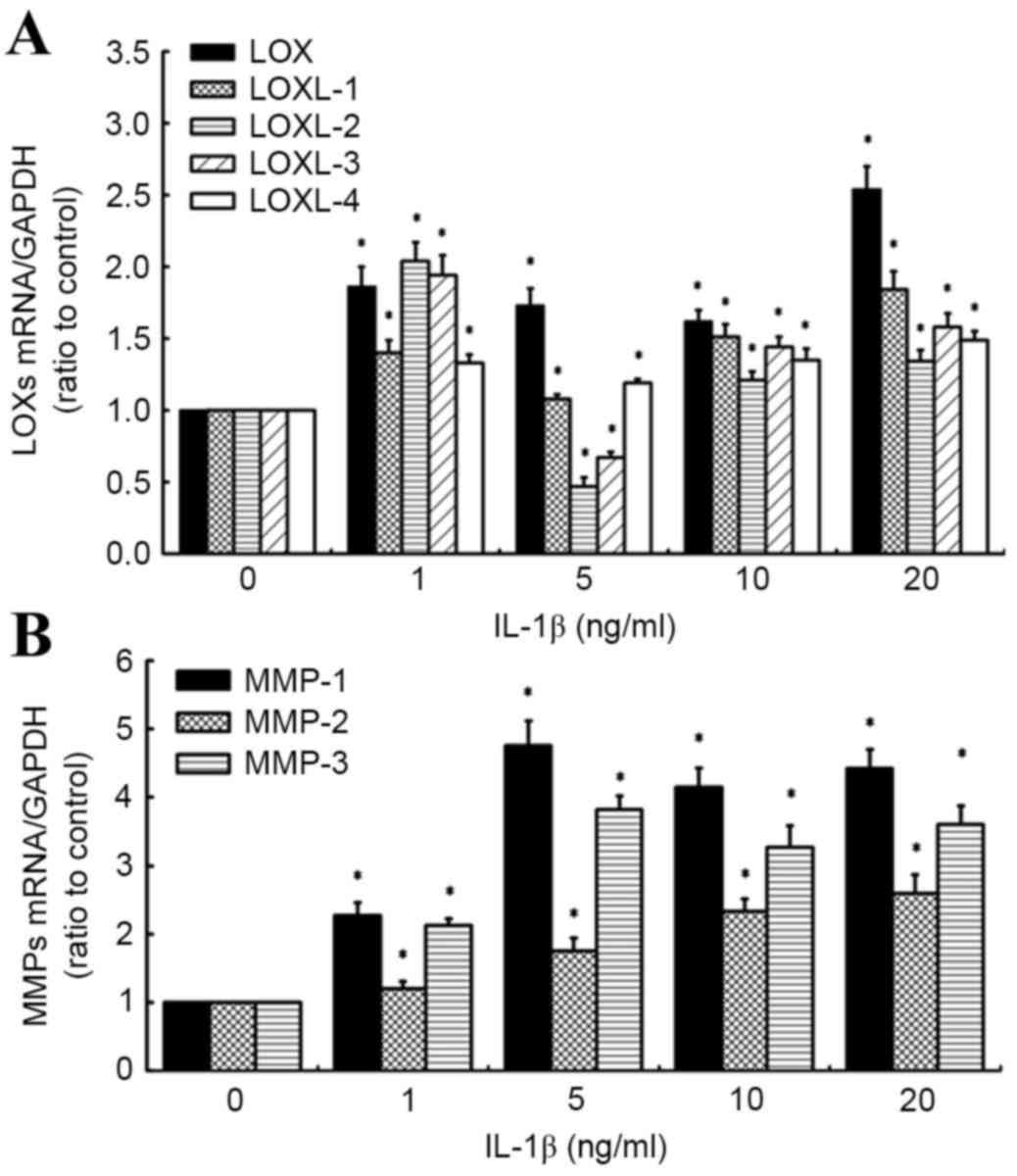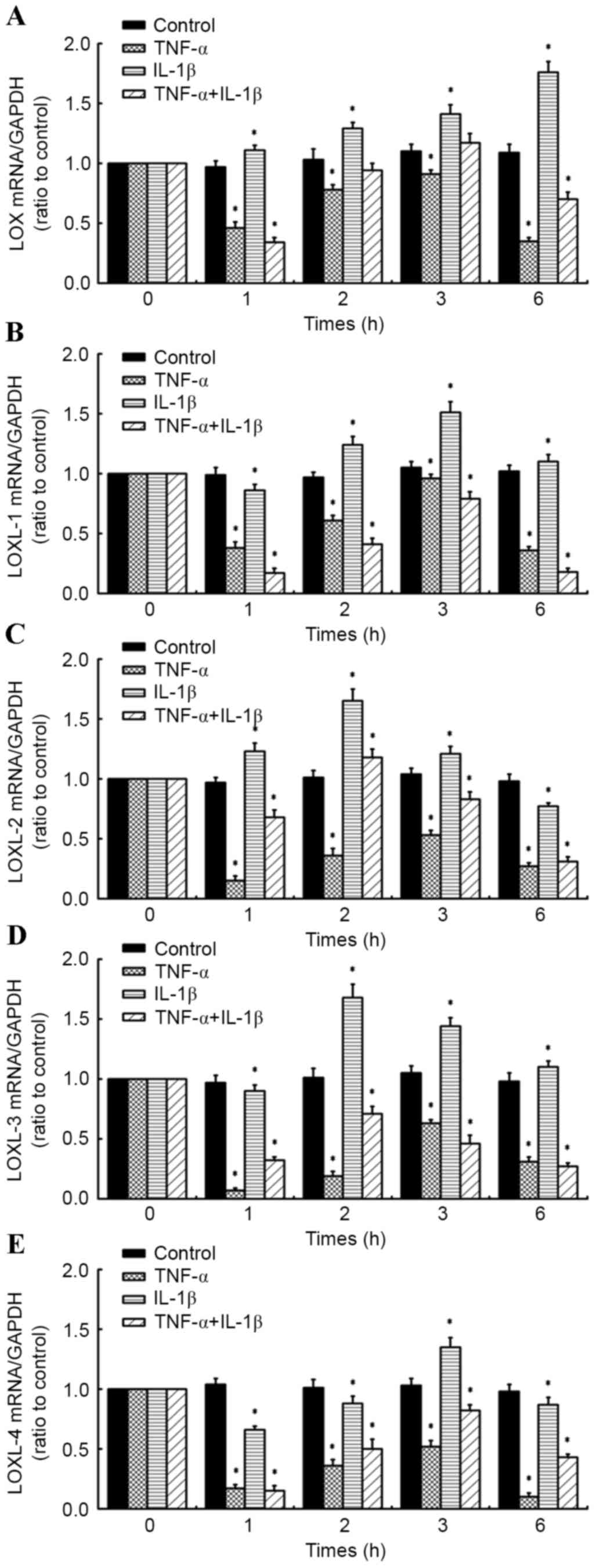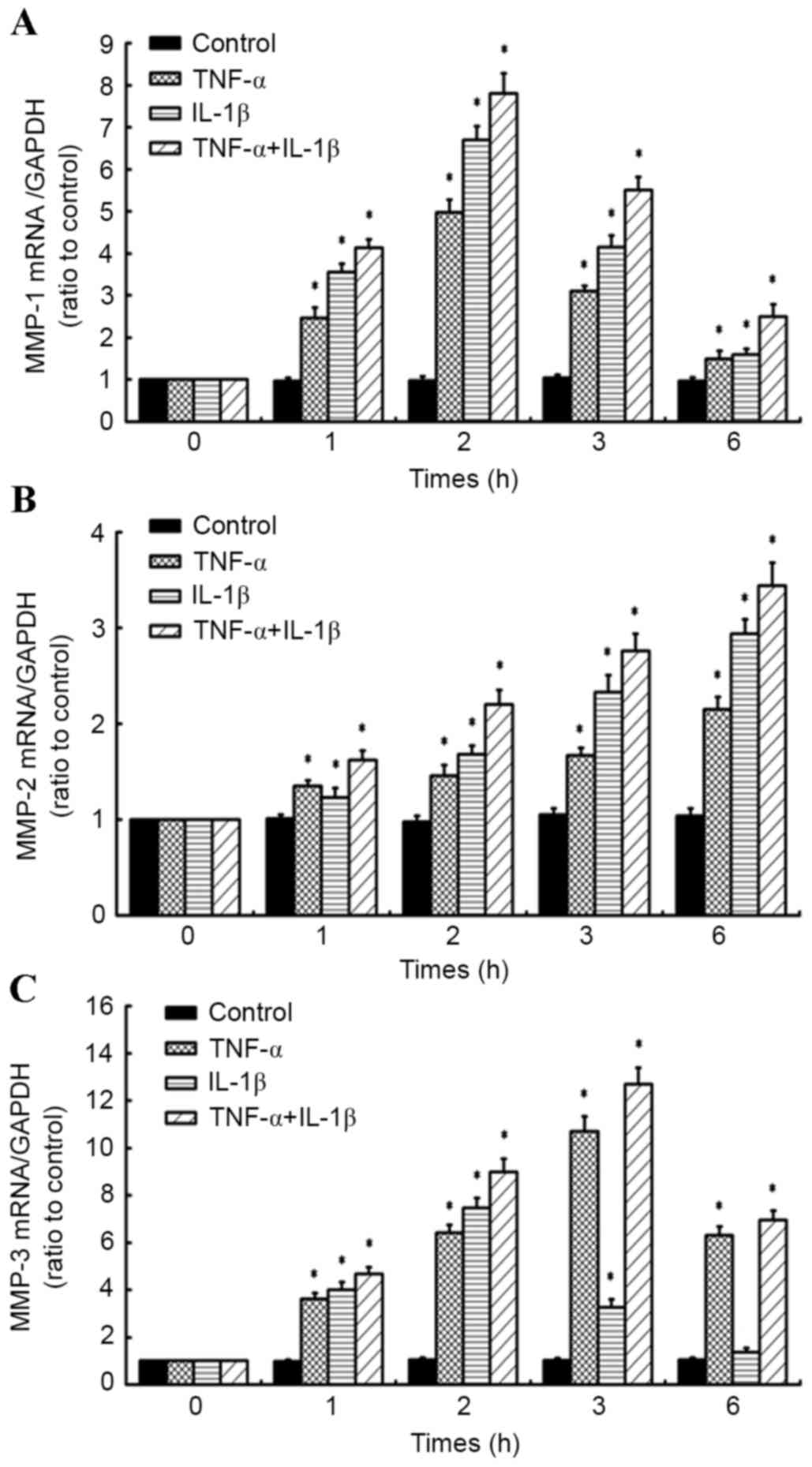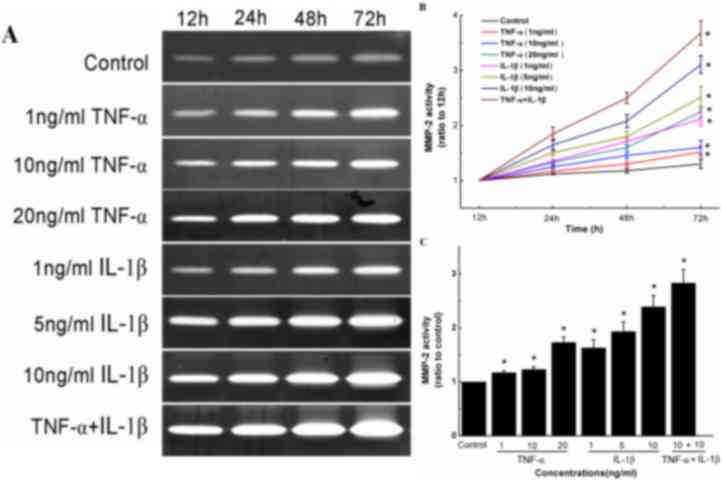|
1
|
Woo SL, Abramowitch SD, Kilger R and Liang
R: Biomechanics of knee ligaments: Injury, healing, and repair. J
Biomech. 39:1–20. 2006. View Article : Google Scholar : PubMed/NCBI
|
|
2
|
Hill CL, Seo GS, Gale D, Totterman S, Gale
ME and Felson DT: Cruciate ligament integrity in osteoarthritis of
the knee. Arthritis Rheum. 52:794–799. 2005. View Article : Google Scholar : PubMed/NCBI
|
|
3
|
Sun K, Zhang J, Wang Y, Xia C, Zhang C, Yu
T and Tian S: Arthroscopic reconstruction of the anterior cruciate
ligament with hamstring tendon autograft and fresh-frozen
allograft: A prospective, randomized controlled study. Am J Sports
Med. 39:1430–1438. 2011. View Article : Google Scholar : PubMed/NCBI
|
|
4
|
Kim HS, Seon JK and Jo AR: Current trends
in anterior cruciate ligament reconstruction. Knee Surg Relat Res.
25:165–173. 2013. View Article : Google Scholar : PubMed/NCBI
|
|
5
|
Bray RC, Leonard CA and Salo PT:
Correlation of healing capacity with vascular response in the
anterior cruciate and medial collateral ligaments of the rabbit. J
Orthop Res. 21:1118–1123. 2003. View Article : Google Scholar : PubMed/NCBI
|
|
6
|
Nagineni CN, Amiel D, Green MH, Berchuck M
and Akeson WH: Characterization of the intrinsic properties of the
anterior cruciate and medial collateral ligament cells: An in vitro
cell culture study. J Orthop Res. 10:465–475. 1992. View Article : Google Scholar : PubMed/NCBI
|
|
7
|
Sung KL, Yang L, Whittemore DE, Shi Y, Jin
G, Hsieh AH, Akeson WH and Sung LA: The differential adhesion
forces of anterior cruciate and medial collateral ligament
fibroblasts: Effects of tropomodulin, talin, vinculin, and
alpha-actinin. Proc Nati Acad Sci USA. 93:pp. 9182–9187. 1996,
View Article : Google Scholar
|
|
8
|
Wiig ME, Amiel D, Ivarsson M, Naqineni CN,
Wallace CD and Arfors KE: Type I procollagen gene expression in
normal and early healing of the medial collateral and anterior
cruciate ligaments in rabbits: An in situ hybridization study. J
Orthop Res. 9:374–382. 1991. View Article : Google Scholar : PubMed/NCBI
|
|
9
|
Zhou D, Lee HS, Villarreal F, Teng A, Lu
E, Reynolds S, Qin C, Smith J and Sung KL: Differential MMP-2
activity of ligament cells under mechanical stretch injury: An in
vitro study on human ACL and MCL fibroblasts. J Orthop Res.
23:949–957. 2005. View Article : Google Scholar : PubMed/NCBI
|
|
10
|
Chithra P, Sajithlal GB and Chandrakasan
G: Influence of Aloe vera on collagen characteristics in healing
dermal wounds in rats. Mol Cell Biochem. 181:71–76. 1998.
View Article : Google Scholar : PubMed/NCBI
|
|
11
|
Garqiulo S, Gamba P, Poli G and
Leonarduzzi G: Metalloproteinases and metalloproteinase inhibitors
in age-related diseases. Curr Pharm Des. 20:2993–3018. 2014.
View Article : Google Scholar : PubMed/NCBI
|
|
12
|
Fan SH, Wang YY, Lu J, Zheng YL, Wu DM,
Zhang ZF, Shan Q, Hu B, Li MQ and Cheng W: CERS2 suppresses tumor
cell invasion and is associated with decreased V-ATPase and
MMP-2/MMP-9 activities in breast cancer. J Cell Biochem.
116:502–513. 2015. View Article : Google Scholar : PubMed/NCBI
|
|
13
|
Vater CA, Harris ED Jr and Siegel RC:
Native cross-links in collagen fibrils induce resistance to human
synovial collagenase. Biochem J. 181:639–645. 1979. View Article : Google Scholar : PubMed/NCBI
|
|
14
|
Avery NC and Bailey AJ: Enzymic and
non-enzymic cross-linking mechanisms in relation to turnover of
collagen: Relevance to aging and exercise. Scand J Med Sci Sports.
15:231–240. 2005. View Article : Google Scholar : PubMed/NCBI
|
|
15
|
Wang Y, Tang Z, Xue R, Singh GK, Lv Y, Shi
K, Cai K, Deng L and Yang L: TGF-β1 promoted MMP-2 mediated wound
healing of anterior cruciate ligament fibroblasts through NF-κB.
Connect Tissue Res. 52:218–225. 2011. View Article : Google Scholar : PubMed/NCBI
|
|
16
|
Xie J, Jiang J, Huang W, Zhang Y, Xu C,
Wang C, Yin L, Chen PC and Sung KL: TNF-α induced down-regulation
of lysyl oxidase family in anterior cruciate ligament and medial
collateral ligament fibroblasts. Knee. 21:47–53. 2014. View Article : Google Scholar : PubMed/NCBI
|
|
17
|
Tang Z, Yang L, Xue R, Zhang J, Wang Y,
Chen PC and Sung KL: Differential expression of matrix
metalloproteinases and tissue inhibitors of metalloproteinases in
anterior cruciate ligament and medial collateral ligament
fibroblasts after a mechanical injury: Involvement of the p65
subunit of NF-kappaB. Wound Repair Regen. 17:709–716. 2009.
View Article : Google Scholar : PubMed/NCBI
|
|
18
|
Tang Z, Yang L, Wang Y, Xue R, Zhang J,
Huang W, Chen PC and Sung KL: Contributions of different
intraarticular tissues to the acute phase elevation of synovial
fluid MMP-2 following rat ACL rupture. J Orthop Res. 27:243–248.
2009. View Article : Google Scholar : PubMed/NCBI
|
|
19
|
Wang Y, Yang L, Zhang J, Xue R, Tang Z,
Huang W, Jiang D, Tang X, Chen P and Sung KL: Differential MMP-2
activity induced by mechanical compression and inflammatory factors
in human synoviocytes. Mol Cell Biomech. 7:105–114. 2010.PubMed/NCBI
|
|
20
|
Zhang Y, Huang W, Jiang J, Xie J, Xu C,
Wang C, Yin L, Yang L, Zhou K, Chen P and Sung KP: Influence of
TNF-α and biomechanical stress on matrix metalloproteinases and
lysyl oxidases expressions in human knee synovial fibroblasts. Knee
Surg Sports Traumatol Arthrosc. 22:1997–2006. 2014. View Article : Google Scholar : PubMed/NCBI
|
|
21
|
Irie K, Uchiyama E and Iwaso H:
Intraarticular inflammatory cytokines in acute anterior cruciate
ligament injured knee. Knee. 10:93–96. 2003. View Article : Google Scholar : PubMed/NCBI
|
|
22
|
Behm B, Babilas P, Landthaler M and
Schreml S: Cytokines, chemokines and growth factors in wound
healing. J Acad Dermatol Venereol. 26:812–820. 2012. View Article : Google Scholar
|
|
23
|
Xie J, Wang C, Yin L, Xu C, Zhang Y and
Sung KL: Interleukin-1 beta influences on lysyl oxidases and matrix
metalloproteinases profile of injured anterior cruciate ligament
and medial collateral ligament fibroblasts. Int Orthop. 37:495–505.
2013. View Article : Google Scholar : PubMed/NCBI
|
|
24
|
Livak KJ and Schmittgen TD: Analysis of
relative gene expression data using real-time quantitative PCR and
the 2(-Delta Delta C(T)) method. Methods. 25:402–408. 2001.
View Article : Google Scholar : PubMed/NCBI
|
|
25
|
Sinno H and Prakash S: Complements and the
wound healing cascade: An updated review. Plast Surg Int.
2013:1467642013.PubMed/NCBI
|
|
26
|
Barrientos S, Brem H, Stojadinovic O and
Tomic-Canic M: Clinical application of growth factors and cytokines
in wound healing. Wound Repair Regen. 22:569–578. 2014. View Article : Google Scholar : PubMed/NCBI
|
|
27
|
Migita K, Eguchi K, Kawabe Y, Ichinose Y,
Tsukada T, Aoyagi T, Nakamura H and Nagataki S: TNF-alpha-mediated
expression of membrane-type matrix metalloproteinase in rheumatoid
synovial fibroblasts. Immunology. 89:553–557. 1996. View Article : Google Scholar : PubMed/NCBI
|
|
28
|
Soller JT, Murua-Escobar H, Willenbrock S,
Janssen M, Eberle N, Bullerdiek J and Nolte I: Comparison of the
human and canine cytokines IL-1(alpha/beta) and TNF-alpha to
orthologous other mammalians. J Hered. 98:485–490. 2007. View Article : Google Scholar : PubMed/NCBI
|
|
29
|
Shona MI, Shaun G and David MT:
Differential regulation of metalloproteinase production,
proliferation and chemotaxis of human lung fibroblasts by PDGF,
interleukin-1beta and TNF-alpha. Mediators Inflamm. 9:155–160.
2000. View Article : Google Scholar : PubMed/NCBI
|
|
30
|
Guirao X and Lowry SF: Biologic control of
injury and inflammation: Much more than too little or too late.
World J Surg. 20:437–446. 1996. View Article : Google Scholar : PubMed/NCBI
|
|
31
|
Menke NB, Ward KR, Witten TM, Bonchev DG
and Diegelmann RF: Impaired wound healing. Clin Dermatol. 25:19–25.
2007. View Article : Google Scholar : PubMed/NCBI
|
|
32
|
Di Giovine FS, Nuki G and Duff GW: Tumour
necrosis factor in synovial exudates. Ann Rheum Dis. 47:768–772.
1988. View Article : Google Scholar : PubMed/NCBI
|
|
33
|
Cameron ML, Fu FH, Paessler HH, Schneider
M and Evans CH: Synovial fluid cytokine concentrations as possible
prognostic indicators in the ACL-deficient knee. Knee Surg Sports
Traumatol Arthrosc. 2:38–44. 1994. View Article : Google Scholar : PubMed/NCBI
|
|
34
|
Choi HM, Oh DH, Bang JS, Yang HI, Yoo MC
and Kim KS: Differential effect of IL-1β and TNFα on the production
of IL-6, IL-8 and PGE2 in fibroblast-like synoviocytes and THP-1
macrophages. Rheumatol Int. 30:1025–1033. 2010. View Article : Google Scholar : PubMed/NCBI
|
|
35
|
Witkowski J, Yang L, Wood DJ and Sung KL:
Migration and healing of ligament cells under inflammatory
conditions. J Orthop Res. 15:269–277. 1997. View Article : Google Scholar : PubMed/NCBI
|
|
36
|
Greenwel P, Tanaka S, Penkov D, Zhang W,
Olive M, Moll J, Vinson C, Di Liberto M and Ramirez F: Tumor
necrosis factor alpha inhibits type I collagen synthesis through
repressive CCAAT/enhancer-binding proteins. Mol Cell Biol.
20:912–918. 2000. View Article : Google Scholar : PubMed/NCBI
|
|
37
|
Murakami H, Shinomiya N, Kikuchi T,
Yoshihara Y and Nemoto K: Upregulated expression of inducible
nitric oxide synthase plays a key role in early apoptosis after
anterior cruciate ligament injury. J Orthop Res. 24:1521–1534.
2006. View Article : Google Scholar : PubMed/NCBI
|
|
38
|
Wang Y, Tang Z, Xue R, Singh GK, Shi K, Lv
Y and Yang L: Combined effects of TNF-α, IL-1β, and HIF-1α on MMP-2
production in ACL fibroblasts under mechanical stretch: An in vitro
study. J Orthop Res. 29:1008–1014. 2011. View Article : Google Scholar : PubMed/NCBI
|
|
39
|
Fu C, Xie J, Chen R, Wang C, Xu C, Chen C,
Wang Z, Lin L, Huang W, Liang X and Sung KL: Effect of titanium
particles and TNF-alpha on the gene expression and activity of
MMP-1, 2, 3 in human knee joint synovial cells. Sheng Wu Yi Xue
Gong Cheng Xue Za Zhi. 30:1022–1026. 2013.(In Chinese). PubMed/NCBI
|
|
40
|
Schulze-Tanzil G, Al-Sadi O, Wiegand E,
Ertel W, Busch C, Kohl B and Pufe T: The role of pro-inflammatory
and immunoregulatory cytokines in tendon healing and rupture: New
insights. Scand J Med Sci Sports. 21:337–351. 2011. View Article : Google Scholar : PubMed/NCBI
|
|
41
|
Nakaya H, Oates TW, Hoang AM, Kamoi K and
Cochran DL: Effects of interleukin-1beta on matrix
metalloproteinase-3 levels in human periodontal ligament cells. J
Periodontol. 68:517–523. 1997. View Article : Google Scholar : PubMed/NCBI
|
|
42
|
Ahn SJ, Rhim EM, Kim JY, Kim KH, Lee HW,
Kim EC and Park SH: Tumor necrosis factor-α induces matrix
metalloproteinases-3, −10 and −13 in human periodontal ligament
cells. J Periodontol. 85:490–497. 2014. View Article : Google Scholar : PubMed/NCBI
|
|
43
|
Raymond L, Eck S, Hays E, Tomek I, Kantor
S and Vincenti M: RelA is required for IL-1beta stimulation of
matrix metalloproteinase-1 expression in chondrocytes.
Osteoarthritis Cartilage. 15:431–441. 2007. View Article : Google Scholar : PubMed/NCBI
|
|
44
|
Dunn SL, Wilkinson JM, Crawford A, Le
Maitre CL and Bunning RA: Cannabinoid WIN-55,212-2 mesylate
inhibits interleukin-1β induced matrix metalloproteinase and tissue
inhibitor of matrix metalloproteinase expression in human
chondrocytes. Osteoarthritis Cartilage. 22:133–144. 2014.
View Article : Google Scholar : PubMed/NCBI
|
|
45
|
Zhong Y, Yu W, Feng J, Fan J and Li J:
Curcumin suppresses tumor necrosis factor-α-induced matrix
metalloproteinase-2 expression and activity in rat vascular smooth
muscle cells via the NF-κB pathway. Exp Ther Med. 7:1653–1658.
2014. View Article : Google Scholar : PubMed/NCBI
|
|
46
|
Gotoh K, Nemoto E, Kanaya S and Shimauchi
H: Extracellular β-NAD(+) inhibits interleukin-1-induced matrix
metalloproteinase-1 and −3 expression on human gingival
fibroblasts. Connect Tissue Res. 54:204–209. 2013. View Article : Google Scholar : PubMed/NCBI
|
|
47
|
Kerrigan JJ, Mansell JP and Sandy JR:
Matrix turnover. J Orthod. 27:227–233. 2000. View Article : Google Scholar : PubMed/NCBI
|
|
48
|
Rodríguez D, Morrison C and Overall CM:
Matrix metalloproteinases: What do they not do? New substrates and
biological roles identified by murine models and proteomics.
Biochim Biophys Acta. 1803:39–54. 2010. View Article : Google Scholar : PubMed/NCBI
|
|
49
|
Trackman PC, Graham RJ, Bittner HK, Carnes
DL, Gilles JA and Graves DT: Inflammation-associated lysyl oxidase
protein expression in vivo, and modulation by FGF-2 plus IGF-1.
Histochem Cell Biol. 110:9–14. 1998. View Article : Google Scholar : PubMed/NCBI
|
|
50
|
Desmoulière A, Darby I, Costa AM, Raccurt
M, Tuchweber B, Sommer P and Gabbiani G: Extracellular matrix
deposition, lysyl oxidase expression, and myofibroblastic
differentiation during the initial stages of cholestatic fibrosis
in the rat. Lab Invest. 76:765–778. 1997.PubMed/NCBI
|
|
51
|
Roy R, Polgar P, Wang Y, Goldstein RH,
Taylor L and Kagan HM: Regulation of lysyl oxidase and
cyclooxygenase expression in human lung fibroblast: Interaction
among TGF-beta, IL-1 beta, and prostaglandin E. J Cell Biochem.
62:411–417. 1996. View Article : Google Scholar : PubMed/NCBI
|
|
52
|
Cenizo V, André V, Reymermier C, Sommer P,
Damour O and Perrier E: LOXL as a target to increase the elastin
content in adult skin: A dill extract induces the LOXL gene
expression. Exp Dermatol. 15:574–581. 2006. View Article : Google Scholar : PubMed/NCBI
|



